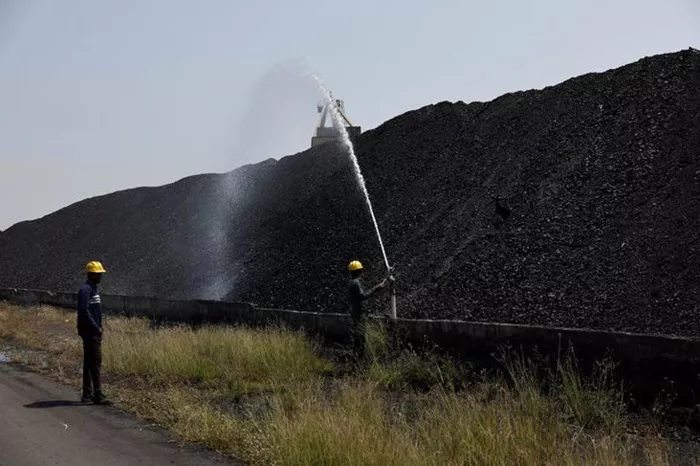India’s coal-fired power generation dropped sharply in May 2025, reaching its lowest level since the Covid-19 lockdowns in 2020, despite the region experiencing the lowest coal prices in Asia in four years. The decline was driven by a combination of mild weather conditions, with the absence of heatwaves, and a significant rise in renewable energy production, which collectively reduced coal demand in the country’s electricity sector.
Data from India’s federal power grid regulator, Grid India, shows that coal’s share in the nation’s power output fell to 70.7% in May — the lowest percentage in three years, though coal still accounted for over 70% of electricity generation. Concurrently, natural gas-fired power output and its share in the energy mix also declined sharply, reflecting a broader drop in fossil fuel-powered electricity in the world’s second-largest coal importer and fourth-largest LNG importer.
Renewable energy, on the other hand, surged to record highs. Power generation from renewables increased by 17.2% in May compared to the previous year, reaching an all-time high and capturing 15.4% of total electricity output — the largest share ever recorded. This shift was supported by soaring renewable capacity installations, particularly in solar energy.
The weaker coal demand in May was partly attributed to subdued electricity consumption growth due to the lack of extreme heat, as well as economic challenges dampening overall demand. Coal-fired generation fell 9.5% compared to May 2024 — the steepest drop since the pandemic lockdown in June 2020. Natural gas saw an even more pronounced decline of 46.5%, marking its worst monthly fall since October 2022, a period characterized by record-high gas prices triggered by the Russia-Ukraine conflict.
Despite the dip in coal generation, India is not abandoning coal as a key energy source. New coal-fired power capacity installations remained robust, with 4 gigawatts (GW) added in 2024 — matching the five-year high set in 2023 and the largest annual increase since 2019. The government aims to expand coal capacity by as much as 90 GW by 2032 to meet growing electricity demand with dependable baseload power.
At the same time, India is aggressively ramping up renewable energy infrastructure. In the fiscal year ending March 31, 2025, the country installed a record 29.52 GW of renewable capacity, bringing total renewable capacity to 220.10 GW. Solar power dominated these gains, with new additions reaching 23.83 GW — a substantial increase from 15.03 GW the previous year. Moreover, India currently has 169.40 GW of renewable projects under construction and 65.06 GW in the tendering pipeline, aiming to reach an ambitious target of 500 GW of non-fossil fuel capacity by 2030.
Industry experts and think tanks have highlighted India’s critical energy transition. The U.S.-based Rocky Mountain Institute (RMI) noted that if financing keeps pace with deployment, India’s clean energy shift could save more emissions by midcentury than Europe and North America combined, positioning the country as a global leader in sustainable development. Similarly, Finland’s Centre for Research on Energy and Clean Air (CREA) underscored India’s vast renewable potential, emphasizing that the country’s expanding clean energy pipeline will alleviate pressure on thermal power resources, particularly as solar energy increasingly meets peak demand.
As India navigates this pivotal moment, the country’s power sector is evolving rapidly, marked by record installed capacity and a dynamic shift toward cleaner energy sources — a transformation with significant implications for both domestic energy security and global climate goals.


